Have you noticed how history repeats itself in our lives? We think we’ve learned to deal with overwhelming anxiety, but each new day offers a new challenge we never would have expected.
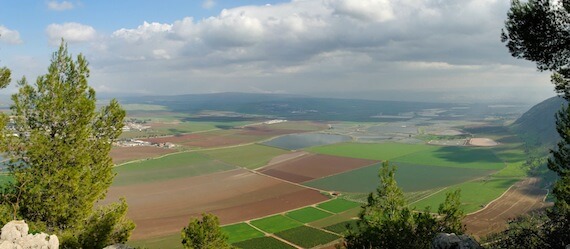
(Photo: The Harod Valley. Courtesy of the Pictorial Library of Bible Lands)
In ancient Israel, the Harod Valley gave stage to two sets of desperate situations. From threats to insecurities to death and hopelessness, in every case the overwhelming anxiety found its peace only one way.
It’s the same with your overwhelming anxiety today.
The Harod Valley—The Shaft of the Jezreel Valley’s Arrow
At the southeastern side of the Jezreel Valley, Mount Gilboa stretches west like a fence that marked the northernmost boundary of the tribe of Manasseh.
Because the valley hosted the most important crossroads for the International Highway in Israel, the mountain range of Mount Gilboa offered a strategic high ground for the nation’s defense.
From above, the Jezreel Valley gives the geographic shape of an arrowhead pointed to the northwest.
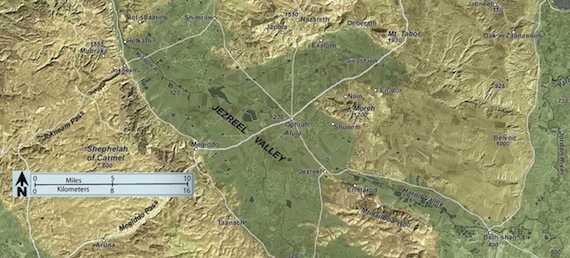
(The Jezreel Valley is shaped like an arrow; the Harod Valley is the shaft. Map courtesy of Satellite Bible Atlas)
- The form seems almost prophetic, as the area has given stage to numerous battles in history.
- Strategy for the future “Battle of Armageddon” also promises to occur in this area (Revelation 16:16).
- The “shaft” of the Jezreel Valley’s arrow represents a smaller valley that runs eastward between Mount Gilboa and the Hill of Moreh. This vale has the name “Harod Valley” and expands more than six miles east toward Beth-shean, meeting the Jordan Valley.
Overwhelming Anxiety 1: Gideon at Ein Harod
At the base of Mount Gilboa, a spring still flows today as it has for millennia.
- Green grass, a swimming pool, and beautiful picnic spots surround the spring that takes its name from the valley that spreads before it.
- Ein Harod, or sometimes called, “Gideon’s Spring,” represents the place where Gideon selected his three hundred men to fight the armies of Midian. (I always remember Gideon fought Midian because their names rhyme.)
The Bible describes the geography of Gideon’s position with clarity:
Then Jerubbaal (that is, Gideon) and all the people who were with him, rose early and camped beside the spring of Harod; and the camp of Midian was on the north side of them by the hill of Moreh in the valley (Judges 7:1).
All of these geographical landmarks are still visible and allow the visitor to recreate the scene in his or her mind.
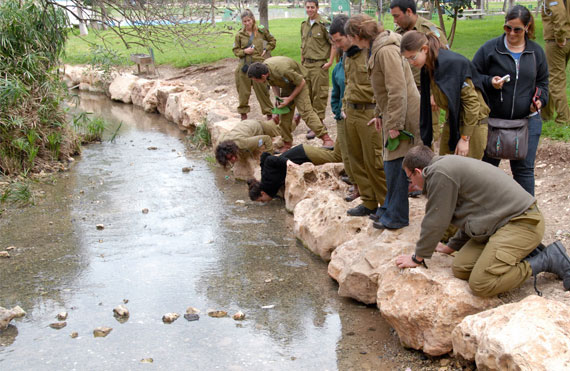
(Photo: Ein Harod with soldiers drinking. Courtesy of the Pictorial Library of Bible Lands)
God had already promised Gideon a great victory, but the fearful judge asked for confirmation. Even after God graciously gave Gideon the reassurance he requested, he still struggled to believe he would have victory against such overwhelming odds.
- 135,000 Midianites camped just across the valley, and the Lord thinned out Gideon’s ranks in order to expose his fear.
- The reduction of troops at Ein Harod cut Gideon’s army down to impossible odds: 450 to 1!
Not surprisingly, the Lord gave Israel a great victory—and strengthened Gideon’s faith.
Overwhelming Anxiety 2: Saul at Mount Gilboa
Years later, a fearful King Saul failed to learn the lesson Gideon acquired in the same area.
On the northern side of the Hill of Moreh, the city of Endor had a resident medium whom Saul visited in a frantic attempt for supernatural information. Surprising even the medium, God revealed through the Prophet Samuel that Saul would die the next day (1 Samuel 28).
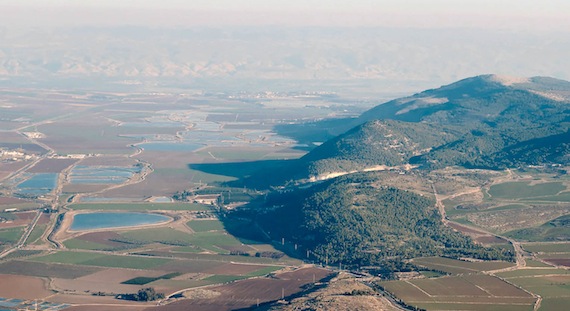
(Photo: Mount Gilboa where Saul died and the Harod Valley. Courtesy of the Pictorial Library of Bible Lands)
The army of Israel fought the Philistines on Mount Gilboa, and King Saul and his sons were killed. Their bodies hung in effigy on the walls of nearby Beth-shean until Hebrews from Jabesh-gilead reclaimed them (1 Samuel 31).
Overwhelming Anxiety 3–4: Elisha and Jesus at the Hill of Moreh
Centuries later, the southern slope of the Hill of Moreh saw the Prophet Elisha raise the dead son of a woman from Shunem (2 Kings 4).
In the first century, Jesus raised a widow’s son on the north side of the Hill of Moreh in a town called Nain (Luke 7:11-17). (I keep the locations of the sites around the Hill of Moreh straight by remembering a simple alliteration: Nain-north and Shunem-south.)
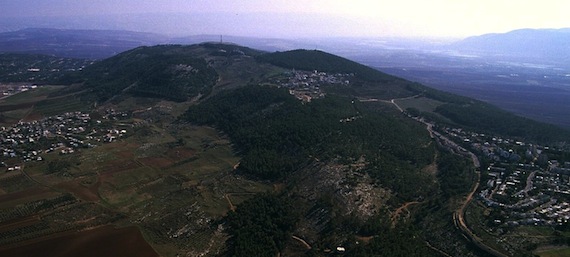
(Photo: The city of Nain, left, on the slope of the Hill of Moreh. Courtesy of the Pictorial Library of Bible Lands)
Overwhelming Anxiety Finds its Peace
How fascinating that two sets of desperate situations occurred in the same area.
- For Gideon and Saul, it was tremendous odds in battle at Gilboa.
- For Elisha and Jesus, it was the death of a mother’s son beside the Hill of Moreh.
In every instance, the lessons pointed to the same principle: Only God provides peace in overwhelming situations—even whey they are as crushing as death.
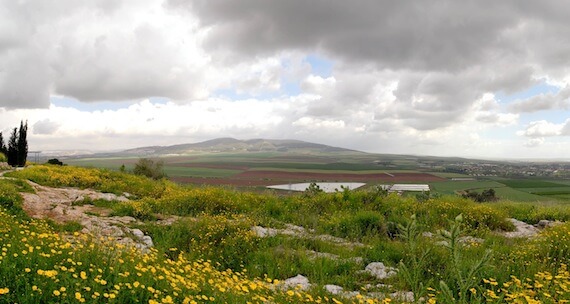
(Photo: The Harod Valley. Courtesy of the Pictorial Library of Bible Lands)
The Harod Valley, the Hill of Moreh, and Mount Gilboa seem as beautiful and ageless today as in the days of the Bible. Geography doesn’t change.
The lessons taught in these places offer truths as enduring as the beautiful settings in which they occurred.
Tell me what you think: What gives you peace in the face of overwhelming anxiety? To leave a comment, just click here.
